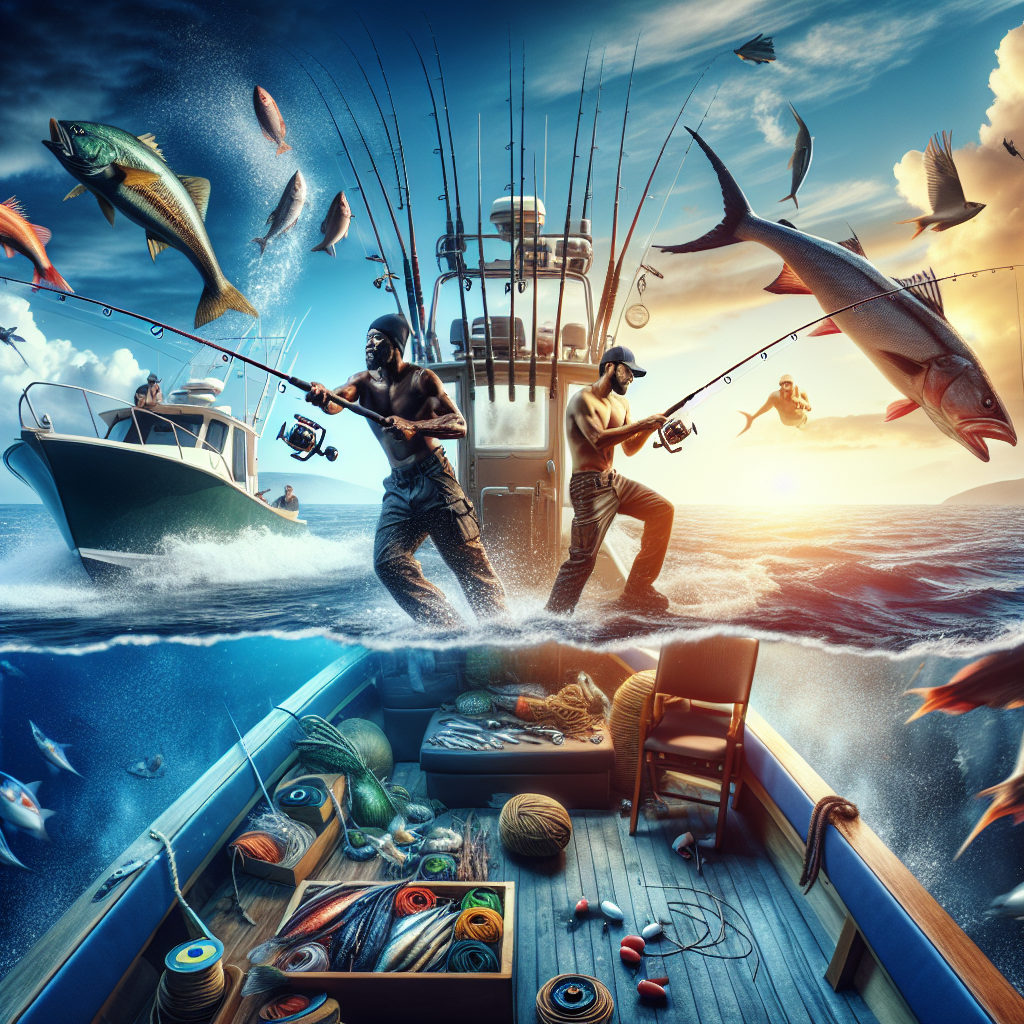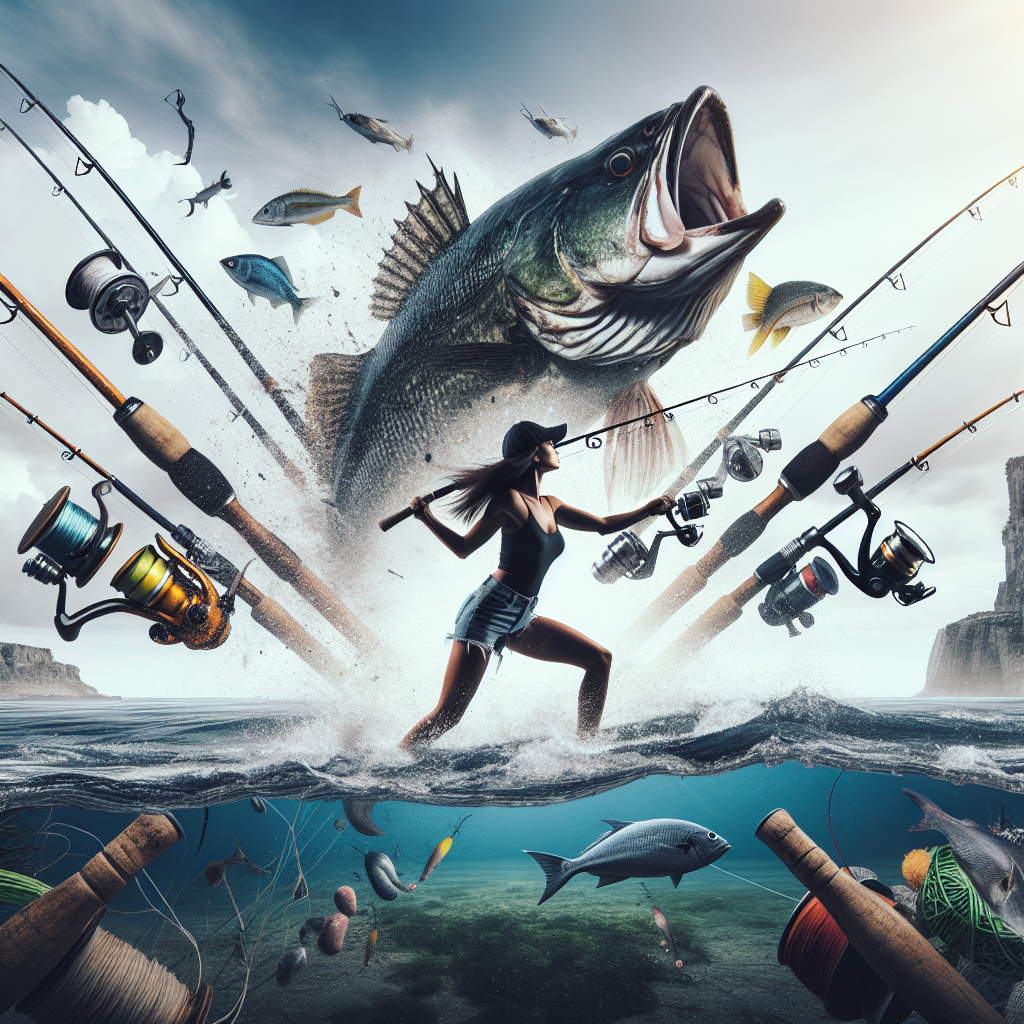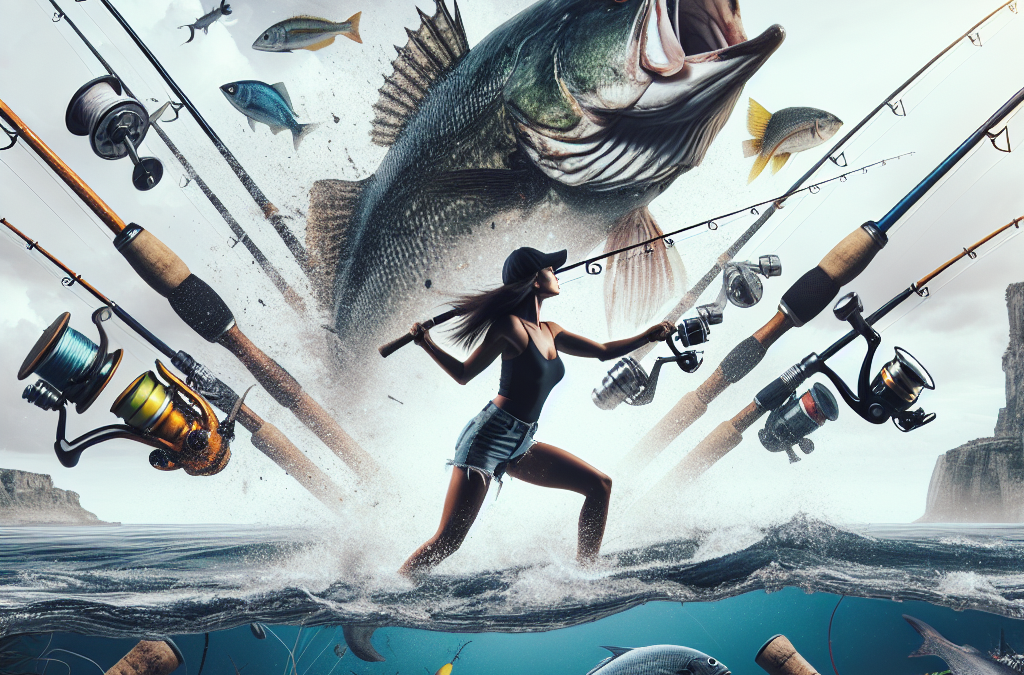Embrace life’s adventures with a thrilling deep-sea fishing trip! Our fascinating article guides you – a marine enthusiast – through vital aspects such as state-of-the-art fishing techniques, captivating locations around the globe, and essential gear requirements. Immerse yourself in this exciting world as you gear up for your next fishing expedition!

Understanding Deep-Sea Fishing
Deep-sea fishing is an exciting, adventurous activity that is both challenging and rewarding if done right. Whether you’re a seasoned angler looking for a new challenge, or a novice wanting to try something different, deep-sea fishing has plenty to offer.
Definition of Deep-Sea Fishing
Deep-sea fishing, also known as offshore fishing, is a type of fishing that takes place approximately 20-30 miles from the shoreline. At such distances, the depths of the water can often exceed 100 feet, hence the term ‘deep-sea.’ This form of fishing typically targets large species that are not typically found near the coast.
Importance of Deep-Sea Fishing
Deep-sea fishing is significant for various reasons. On one hand, it provides an ideal setting for recreational fishing, allowing anglers to catch bigger, more exotic species while enjoying the stunning sea-faring views. On the other hand, deep-sea fishing contributes to food supply and our understanding of marine life. Some deep-sea species serve as a source of food globally, while others are vital for scientific studies to understand more about marine biology and the ocean’s ecosystem.
Basic Principles of Deep-Sea Fishing
The fundamental principles of deep-sea fishing involve understanding the species you’re aiming to catch, knowing which technique to use, and being aware of the fishing location. You must familiarize yourself with the habits and habitats of your targeted species, as your technique will largely depend on this. For instance, some fish may prefer feeding near the surface, while others may be bottom-dwellers.
Deep-Sea Fishing Techniques
There are several techniques deployed for deep-sea fishing, each with its own set of benefits and challenges.
Trolling
Trolling involves trailing baited fishing lines behind a moving boat. This technique imitates the movement of small fish, attracting large predator fish. The speed is often slow to ensure that the bait stays in the water.
Drifting
Drifting, as the name suggests, involves allowing the boat to drift with the current. Bait is dropped in the water and left to float or sink naturally, enticing the fish by mimicking relative inactivity.
Bottom Fishing
Bottom fishing targets fish that dwell near the seabed, such as groupers and snappers. This technique involves dropping weighted bait to the ocean floor.
Jigging
Jigging involves rapid, repetitive lifting and lowering of the fishing rod, causing the bait to move in a jig-like fashion. This technique is usually used to lure and catch predators.
Longlining
Longlining is a commercial technique where a long line, or mainline, is set with baited hooks and deployed into the ocean. This method can cover a larger area and catch more fish.
Selection of Suitable Deep-Sea Fishing Locations
Identifying potential fishing locations is crucial for a successful deep-sea fishing trip.
Factors Influencing the Selection of Fishing Locations
Various factors influence the selection of fishing locations, including the type and abundance of fish species, water depth, and water temperature. Other considerations may include local fishing regulations and accessibility to the location.
Seasonal Variation of Fishing Locations
Seasonal variations can significantly impact the availability of certain fish species. The migration patterns, breeding, and feeding habits of different species change with the seasons, affecting where and when they can be caught.
Identification of Marine Habitats
Recognizing different marine habitats can also be beneficial in selecting fishing locations. Factors such as the presence of reefs, underwater structures, and the seabed’s composition can indicate the presence of certain fish species.
Top Destinations for Deep-Sea Fishing
Several destinations around the world are famous for their deep-sea fishing experiences.
Deep-Sea Fishing in the Caribbean
The warm, clear waters of the Caribbean make it a hotspot for deep-sea fishing. From marlin to sailfish, this vibrant region is flush with numerous exciting species.
Deep-Sea Fishing in Mediterranean
The Mediterranean Sea, with its diverse ecosystem, offers a fascinating variety of species such as swordfish, tuna, and sea breams. It’s a paradise for anglers seeking a unique deep-sea fishing experience.
Deep-Sea Fishing in the Atlantic Ocean
The vast Atlantic Ocean provides numerous great fishing locations, home to a wide variety of large fish species such as tuna, marlin, and barracuda.
Deep-Sea Fishing in the Gulf of Mexico
The Gulf of Mexico is renowned for its deep-sea fishing, with an impressive variety of species such as snapper, grouper, and kingfish.

Safety Measures in Deep-Sea Fishing
Safety should always be paramount when undertaking a deep-sea fishing expedition.
Importance of Safety
Many aspects of deep-sea fishing pose potential hazards, such as the unpredictable weather, the equipment used, and the fact that help could be miles away if an emergency arises. Therefore, taking appropriate safety measures and precautions is essential.
Safety Gear and Equipment
You should always be equipped with suitable safety gear and equipment. This can include life vests, first aid kits, emergency flares, VHF radio, and more. It’s crucial to have these on board and be familiar with their use.
Weather Conditions and Safety
Keeping an eye on the weather conditions is another critical aspect of safety in deep-sea fishing. Sudden weather changes can turn a fishing trip dangerous quickly. Always check the weather forecast before setting out.
Preparation for Deep-Sea Fishing
Preparing for a deep-sea fishing trip involves much more than just packing the right gear.
Physical Preparation
Deep-sea fishing is physically demanding. It requires strength, balance, and endurance. Therefore, physical preparedness is crucial.
Necessary Knowledge and Skills
Having a good understanding of different fish species, fishing techniques, safety procedures, and regulations is necessary to ensure a successful and safe trip.
Planning and Navigation
Planning your route, marking your fishing spots, and understanding how to use navigational tools like maps and compasses can make your trip far more enjoyable and efficient.
Deep-Sea Fishing Gear
Successful deep-sea fishing hinges significantly on the fishing gear you use.
Fishing Rods and Reels
The size and species of fish you are aiming to catch will determine the type of fishing rod and reel you should choose. Heavy-duty rods and reels are essential for larger species.
Fishing Lines and Hooks
Strong, durable lines and sharp, robust hooks are crucial in deep-sea fishing. The size and strength of your line and hook should match the species you’re targeting.
Baits and Lures
Live or artificial baits can be used to attract fish. The choice of bait or lure often depends on the targeted fish’s diet.
Fish Finders and GPS devices
Modern technology such as fish finders and GPS devices can significantly enhance your fishing experience by helping you locate fish and navigate your route.
Ethics of Deep-Sea Fishing
Responsible behavior is paramount when engaging in deep-sea fishing.
Responsible Fishing
Adhere to fishing regulations, respect fishing quotas, and promptly release any catch that you don’t intend to keep.
Sustainable Fishing Practices
Choose methods that are eco-friendly and use gear that minimizes impact, such as hooks that don’t harm the fish when released.
Respect for Marine Life
Recognize that the ocean and its inhabitants deserve respect. Avoid disturbing marine habitats and refrain from catching species that are threatened or endangered.
Effects of Climate Change on Deep-Sea Fishing
The deep-sea fishing industry, like many others, is feeling the impacts of climate change.
Impact on Fish Populations
As temperatures rise, some fish species are migrating to cooler, deeper waters. This shift can impact the availability of certain species in traditional fishing locations.
Changing Weather Patterns and Fishing
Unpredictable weather can make deep-sea fishing more challenging and potentially more dangerous.
Climate Change Mitigation in Fishing
Efforts are needed to reduce the fishing industry’s carbon footprint, such as fuel-efficient engines and sustainable fishing practices.
Future of Deep-Sea Fishing
The future of deep-sea fishing will be shaped by various factors, including technology, regulations, and environmental changes.
Technological Advancements in Fishing
With the advent of sophisticated fish finders, GPS navigation, and innovative gear, deep-sea fishing is becoming more efficient and successful.
Impact of Regulations and Policies
Regulations and policies will continue to influence deep-sea fishing. These measures aim to ensure the sustainability of fish populations and protect marine ecosystems.
Future Challenges for Deep-Sea Fishing
Challenges like overfishing, pollution, and climate change will continue to influence the future of deep-sea fishing. It’s essential to address these issues to ensure the longevity and sustainability of this activity.
In conclusion, while deep-sea fishing can be a thrilling activity packed with adventure and reward, it also requires careful consideration, robust knowledge, and respect for marine life. Always remember, the future of this captivating sport lies in our hands and depends on how well we look after our vast and beautiful oceans.

